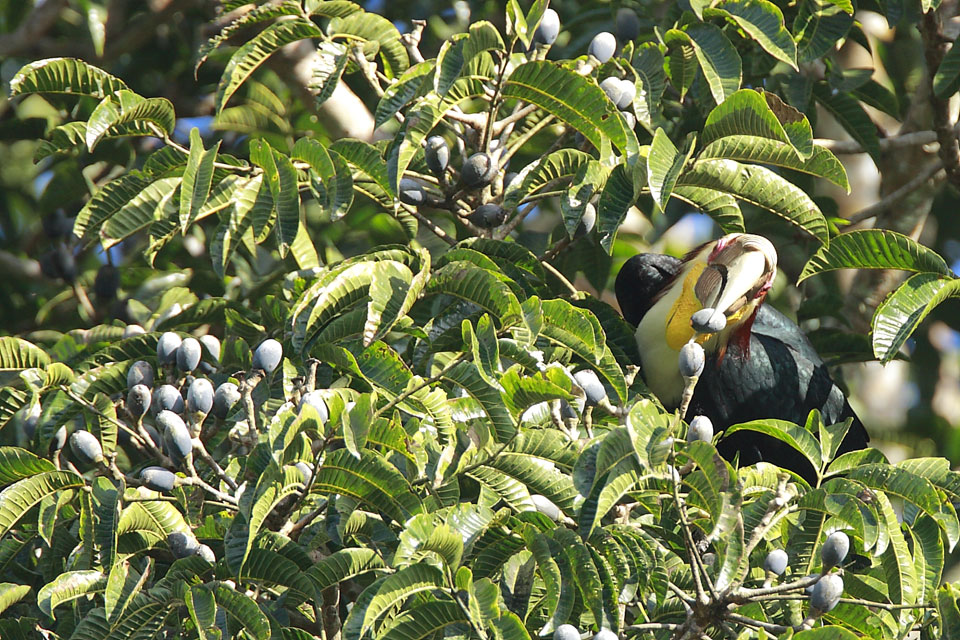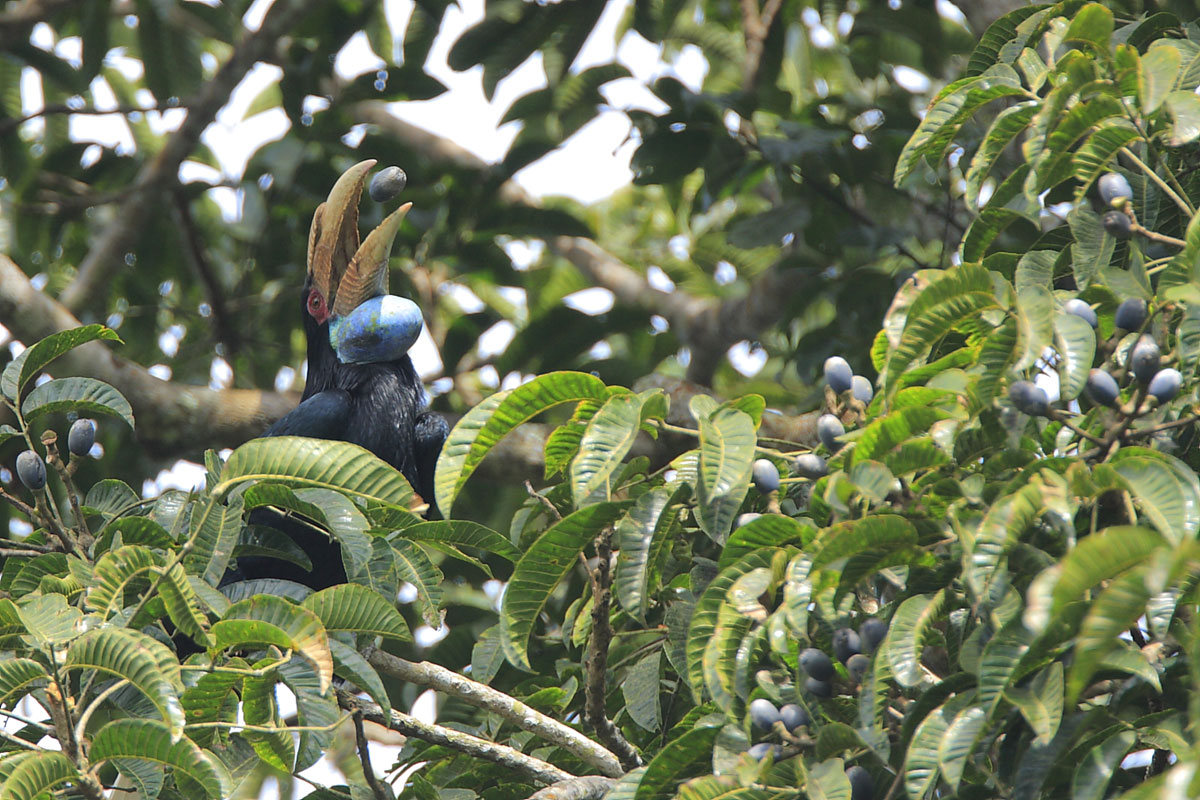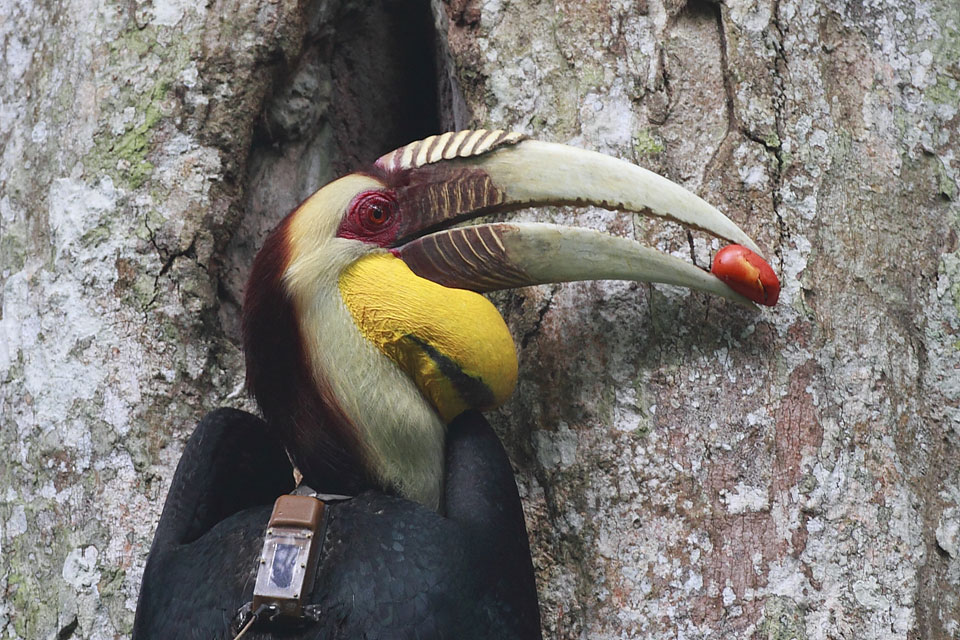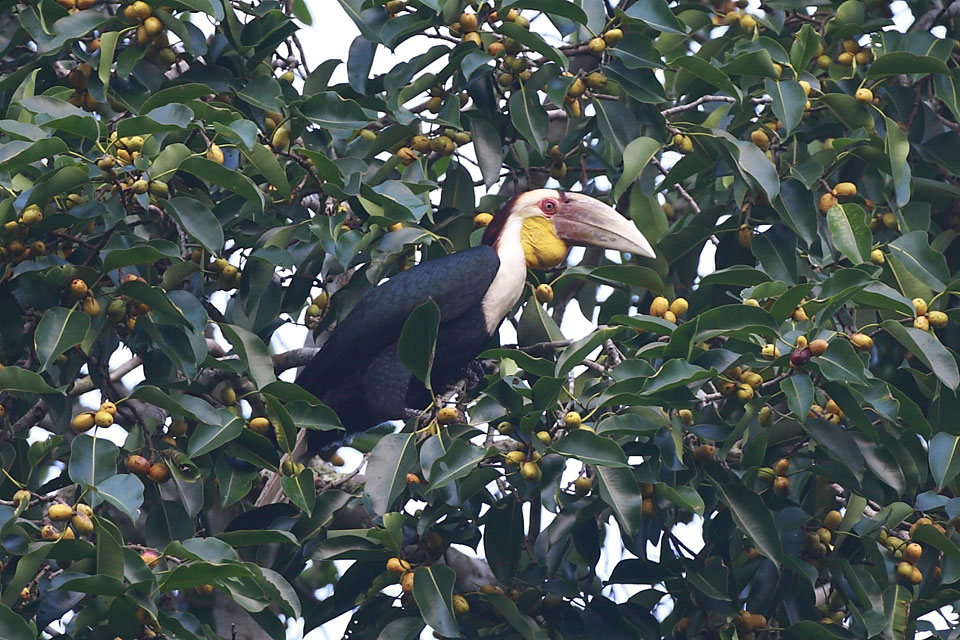Occurs in extensive tracts of primary rainforest, mainly in the foothills, but has been recorded to 2,560 m elevation. Locally it will extend into coastal forest and adjacent selectively logged forest.
There it feeds mainly on fruits high in large forest trees. This hornbill is well studied; fruits of more than 30 different genera of trees have been identified and are similar to those eaten by Great Hornbill; the proportion of figs and lipid-rich drupes vary according to location and season, and ranges further when not breeding and fewer lipid-rich fruits available.
Animal food is generally less than 5% of the diet, but more during the breeding season when extra protein is needed. Prey includes bird eggs and nestlings, reptiles, insects, snails, centipedes and crabs. Although mainly a canopy bird, it has been known to descend to the ground to collect fallen fruit or catch terrestrial prey.
Mainly sedentary but will fly far and high across the forest to visit fruiting trees, also crossing open water between islands. The home range of a breeding pair is about 10 km2 in Thailand.
Outside of the breeding season, during the so-called flocking season, the home range extends to about 28 km2, and large flocks will gather at communal evening roosts, as many as 1,000 birds having been counted in one area.




